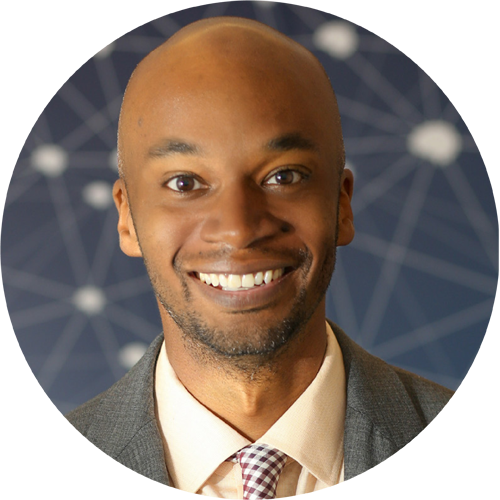Diversity and inclusion is becoming mainstream. Ideas like unconscious bias, privilege, and intersectionality are embedding themselves into the common vocabulary, and shaping expectations for how we see—and how we believe others should see—the world.
At times we focus our attention on how we want others to think and believe. It makes sense to want everyone to feel—and truly embrace—every person as equal, and believe that all should be provided with access and opportunities to thrive and excel.
Unfortunately, focusing on beliefs may be misguided; the focus needs to be on behaviors.
When discussing culture change with organizations, my peers and I talk about our culture change model; Priorities, Habits, and Systems. Priorities are about raising the awareness of something; getting people to want to notice or pay attention. Habits are about the behaviors that we want to see or hear people demonstrate. And Systems are what either reinforce, or undermine, the priorities we’ve set, and the habits we’ve articulated. Just seeking to give people an ‘ah-ha’ moment as to why diversity and inclusion matter, is focusing only on the Priorities part of this equation, and for that reason it’s doomed to fail. Here are just a few reasons why what we do matters more than why we do it.
Even the ‘woke’ have bias
We tend to think of behavior in binary terms; that either someone cares about diversity and inclusion, or they don’t. But that isn’t actually the case. What we see in reality is that even the most passionate supporters aren’t always aware of their blind spots. For instance, as traditionally underrepresented groups make strides, progress is not equally distributed. As women around the world raise their voices with #MeToo, poorer minority women continue to deal with abuses and assaults at a rate higher than others. While pay disparity has caught the attention of many, what is less expressed is how much of a disparity still exists amongst and between men and women of different ethnicities. While the LGBTQIA+ community has seen progress in recognition and acceptance, the same has not been as true of certain groups within that community. Progress is not universal. And despite the best intentions, we each see the world through our own eyes, our own experiences, and our own priorities. The lawyer fighting for equality may still unintentionally sentence black defendants to longer sentences and harsher penalties. The teacher who cares about their students may not recognize that they are more aware of when the black children act out, and therefore suspend and expel them at a rate that far exceeds their white counterparts. Senior male executives routinely express that they care about gender equality because they have daughters, sisters, and wives in the workforce, and yet a glance at their leadership team reveals that they’ve surrounded themselves with people who look just like them.
Good intentions don’t always translate into great actions. Even though its validity may be debated, the Harvard Implicit Association Test gives us another lens through which to view this paradox. A test that purports to measure our bias cannot predictably forecast how biased we will act. Our unconscious biases are human and permanent. As we like to say at The NeuroLeadership Institute, if you have a brain, you have bias. That bias is impossible to permanently ‘break’, but we can selectively mitigate it; and that mitigation starts with accepting that even our best intentions will fail if we aren’t focused on habits and systems.
Changing beliefs is difficult
We love our beliefs, and we’re quite attached to them. Our lived experience is our reality, something we refer to as an Experience bias; the belief that we see the world as it truly is, and that our subjective view of reality is actually objective. As a result, we tend to have strong reactions when people attempt to tell us that we’re wrong. Challenging someone’s beliefs, and as an extension, their identity, can have an adverse effect. In fact we are more likely at times to harden our beliefs or close ourselves off to another perspective when our beliefs are attacked. Confirmation bias—that which causes us to seek out and disproportionately value information which aligns with or reinforces our previously held beliefs—is arguably one of the most commonly referenced and widely understood forms of cognitive bias. Similarly, cognitive dissonance is a mental shortcut that leads one to believe, in part, that ‘if I believe myself to be a good person, the things I do are good. And if I do something that winds up not good, it’s because I had no other option or external circumstances were at play.’ These, and many other biases and mental shortcuts, are all ways in which we are wired to hold on to our existing beliefs, and to reject outside influences.
Systems matter
Cathy O’Neil argues compellingly in her 2016 bestseller, Weapons of Math Destruction, that the algorithms and machine learning which are increasingly deciding things like who gets parole, who gets a loan, who gets into college, and who gets hired, are embedded with biases that can render them harmful. In many cases that harm is directed towards those who are already most underserved and at risk. Ethicists and programmers alike are contending with how to crunch and interpret massive amounts of data without losing the individual at the center of the decision being made. While it is important that coders and architects care about fairness and equality, what is more important is that they embed fairness and equity into the algorithms and models that they’re building. There is little reason to believe that Amazon intentionally made a gender biased hiring algorithm, or that Microsoft made a bot that turned into an internet troll, but does it matter what they intended? Or does it matter that when a product is released, that it works for all, not for some? And that the data about what is good, or worthy, doesn’t carry with it the same mental shortcuts that have underpinned the current unbalanced systems? And it’s not just algorithms. What systems, implicit or explicit, exist in your organization for who gets promoted, or recognized?
Ultimately, behaviors drive much of what we experience. Intent can be relevant, but impact is paramount. Striving for impact, and striving for behavior change through clear expectations and fairer systems is a greater way to change what people do and what people experience than simply hoping to ‘break through’ to everyone. Getting someone to care can feel good in the moment, because it creates a salient story or an emotional moment, but that care doesn’t reliably translate into changed behavior. What we want, what we really need, in order for diversity to become the status quo, and for inclusion to be the norm, is, ironically enough, not all people believing fairness matters; it’s all people behaving fairly.
Originally published on Forbes.
Follow us here and subscribe here for all the latest news on how you can keep Thriving.
Stay up to date or catch-up on all our podcasts with Arianna Huffington here.


